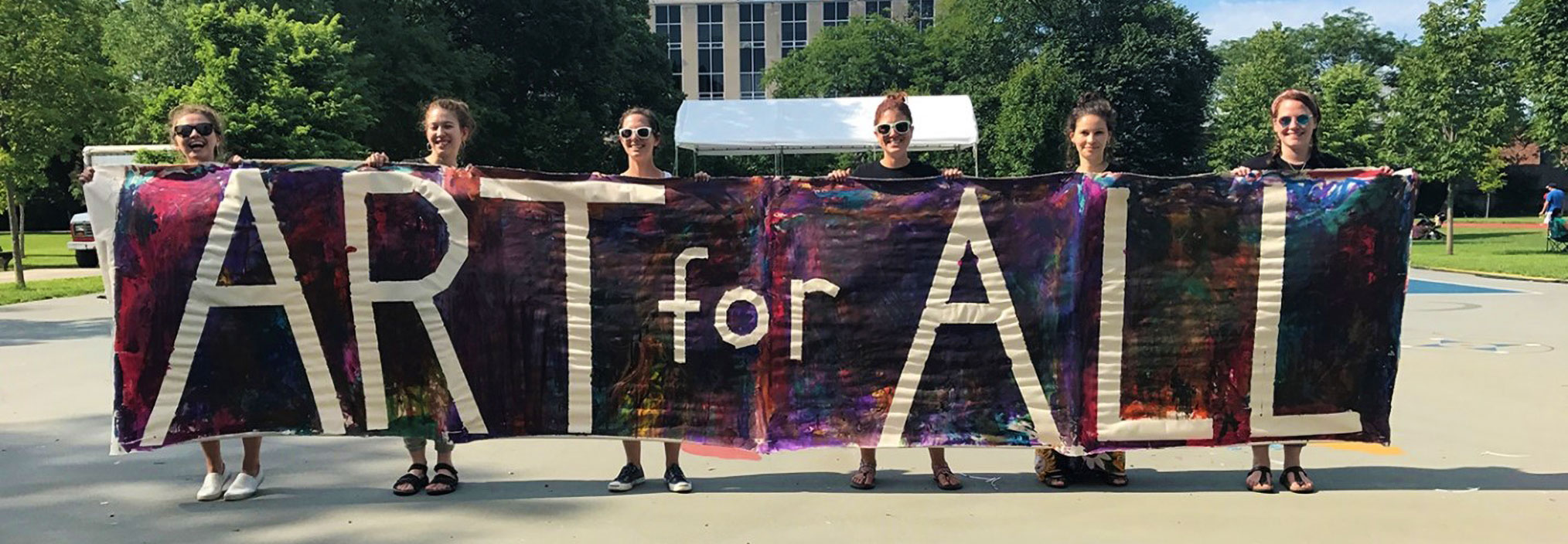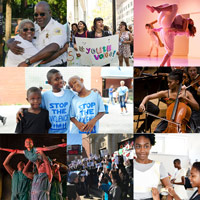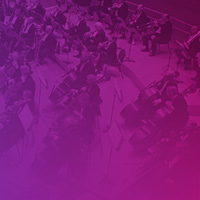Urban Gateways exposes young people to the transformative power of art and helps them imagine different futures.
Leslé Honoré started writing poetry when she was six.
Words penned during her youth planted seeds of creative expression that blossomed into a multifaceted and successful career.
“Poetry is what brought me to every space that I have ever been," said Honoré, Chief Executive Officer of Urban Gateways, Chicago’s oldest nonprofit arts education organization. “Every job I’ve had, in some way, was connected to my artistic expression, and ensuring that other kids have the same opportunity to express themselves is why I do the work that I do.”
Exposing young people to the transformative power of art is Urban Gateways’ mission. In 1961, Charles Burns, Dr. Raymond Jerrems, Helen Kolar, Connie Williams, and Jessie Woods founded the organization to ensure that every child in Chicago—especially in underinvested neighborhoods—can experience art in its various forms.
“Right now, at this moment in history, we need art more than ever to create spaces of safety, self-expression, and beauty.”
Early efforts focused on giving tickets to schools for operas, music recitals, orchestra concerts, and theater productions. That work expanded over the decades to include utilizing arts education for social change, a goal achieved in part by connecting people across different languages, races, classes, and ethnicities, Honoré said.
“Right now, at this moment in history, we need art more than ever to create spaces of safety, self-expression, and beauty,” she said. “The affirmation of seeing art that is reflective of yourself, your culture, your community—it does something to you, to your spirit and soul, that makes you feel worthy. What better gift can we give our kids?”
An Urgent Need for Arts Education
Almost half of Chicago Public Schools have only one arts teacher position, some of which are vacant. Urban Gateways fills the gap for about 40,000 students by bringing teaching and performance artists to about 150 schools.
Almost 71 percent of its work occurs in Chicago, and 90 percent is school based.
Urban Gateways fills the gap for about 40,000 students by bringing teaching and performance artists to about 150 schools.
Urban Gateways provides programs in literary, performing, and visual arts in public and nonpublic elementary and high schools, park districts, public libraries, colleges, and community organizations. The organization also publishes Mildsauce, a youth-led webzine.
Young people can access state-of-the-art digital media resources, including a variety of audio-visual equipment and a computer lab. Professional development, residencies, and workshops also are offered to explore art forms in dance, music, theater, or new media.
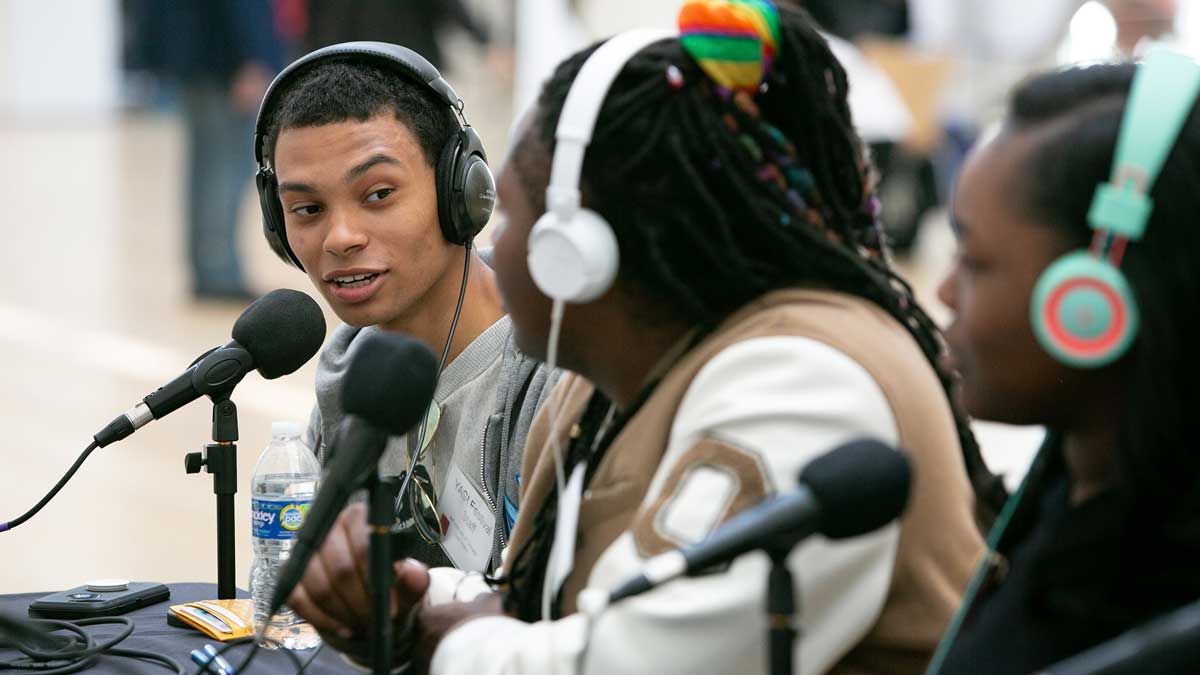
Through Street Level, a media arts center in West Town, Urban Gateways provides multimedia resources and training to young people. Credit: Alice Feldt
All programs, including those with multilingual services and others that meet the needs of young people with disabilities, are designed to teach creativity, collaboration, problem solving, empathy, innovation, and positive risk-taking—skills considered essential to succeeding in life.
Urban Gateways engages a broad network of partner organizations, including treatment facilities, museums, and entertainment venues.
Those connections open the minds of students to new pathways into the arts, which is what happened last summer when Lollapalooza promoters gave media passes to students, allowing them to interact with journalists from Rolling Stone and other publications covering the concerts. Young people observed lighting and sound technicians, festival managers, groundskeepers, and related professionals.
The young visitors realized that they can engage with, and work in, the arts in many ways—not solely by performing.
“If you can't see it, you can't be it,” Honoré said. “We can create an opportunity for them to see it. It embeds in them something that I know rolls into something greater.”
That happened to high school senior Maliah Lee. She and about a dozen other students participated in a six-episode podcast that Urban Gateways produced. They viewed films about protest movements and discussed the impact of activism on Chicago communities. They also virtually met an activist featured in one of the documentaries.
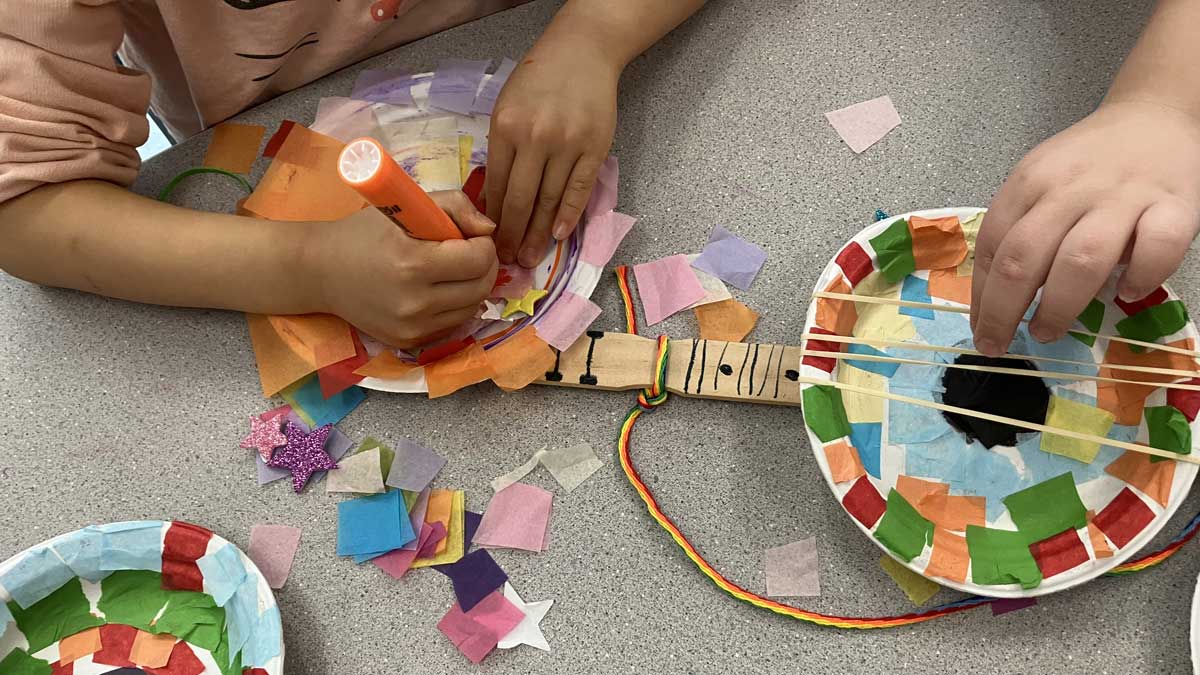
During visual art workshops, like this one led by artist Jean Parisi at Beard Elementary School in Chicago in 2024, students create a variety of works. Credit: Urban Gateways
“Every time I went to record the podcast and experienced a new film, I was seeing another future,” Lee said. The podcast inspired her to explore new perspectives, fostering an interest in diplomatic work and activism.
“I was seeing a different version of myself,” she said. “And when those doors are opening in my mind, and you've never seen that, it's very inspirational. It makes you want to do more. It makes you want to put more effort into the person you can become.”
An Intergenerational Influencer
Some Urban Gateways participants stay involved, serving as instructors, program managers, and board members.
Bob Faust became aware of Urban Gateways in the 1980s when a flamenco dance troupe performed in his school auditorium.
“It blew me away,” said the artist, designer, principal, and creative director of a cultural branding studio that bears his name. “I'd never seen anything like it.”
He has been working on and off with Urban Gateways since the 1990s as a designer, consultant, and partner. Last year, he curated “Track(ed) Changes: Democracy Runs Through Our Neighborhoods,” a public art exhibition that incorporated the work of 18 Urban Gateways participants, mostly teenagers.
They conceived and executed a mural depicting people of different backgrounds enjoying time in a Chicago park. The colorful mural wrapped around a CTA “L” train car that—along with other cars decorated by Chicago artists—rode the rails in the summer of 2024 when many tourists visited Chicago.
“I have seen a kid create something for the first time and have that magical moment where all the agency, all the autonomy, all the power of that creation, is theirs.”
“It was a great opportunity for [the students] to have exactly the same experience that a working artist has—same parameters, same time frames, same dollars, same all of it,” Faust said.
When he and a group of students took a field trip to see the finished product, shouts of elation rang out as they watched the car carrying passengers along the tracks. The group and their eye-catching work were featured with other “L” train artists in the New York Times.
“I have seen a kid create something for the first time and have that magical moment where all the agency, all the autonomy, all the power of that creation, is theirs,” Honoré said. “No one can tell them that it's right or wrong, because it is their expression. That is a moment of empowerment.”
Succeeding through Challenges
When the COVID-19 pandemic struck in March 2020, arts nonprofits—almost all of which were offering most programs in person—had to pivot to alternative formats. Since then, support for the arts has become politicized nationally and financially challenged locally.
Urban Gateways has endured the consequences. It now serves half as many schools as it once did and has implemented staff reductions as the organization moves to a hybrid model.
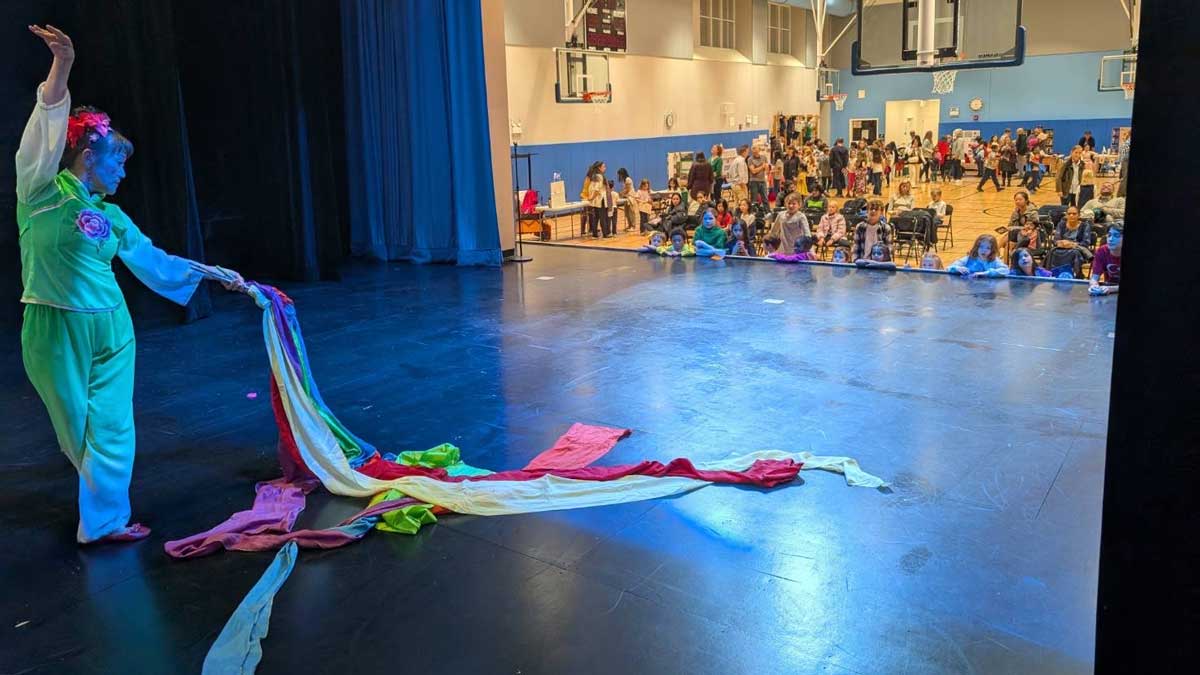
Students at St. James School in Chicago were treated to a Chinese Folk and Classical Dance performance through Urban Gateways in 2025. Credit: Urban Gateways
Despite the challenges, Urban Gateways continues to strengthen the individuals and neighborhoods it serves by connecting them to a larger arts community that has the power to uplift, inspire, and heal.
Urban Gateways survives because it is needed.
Not every young person, especially in marginalized communities, has access to or can safely get to art programs outside of school. Academics and athletics continue to be funded, “but there are artists who need to be supported in the same way,” Honoré said.
“We are committed to continuing to do this work,” she said, “and we hope we continue to find people who are committed to helping us.”
Since 1980, MacArthur has provided $2.38 million to Urban Gateways for general operating support, technology upgrades, program development, an arts educator exchange program, and other aspects of the organization.



